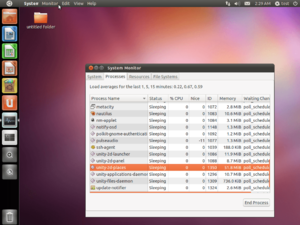Add new customization aspects to your Linux desktop with Just Perfection GNOME Extension.
Source: Customizing GNOME with Just Perfection Extension (It’s FOSS)
Add new customization aspects to your Linux desktop with Just Perfection GNOME Extension.
Source: Customizing GNOME with Just Perfection Extension (It’s FOSS)
Those of you who regularly use fullscreen mode for apps and media content in GNOME Shell are gonna dig the following new GNOME extension. It’s called “Peek Top Bar on Fullscreen” because —shock!— that’s exactly what it does: it lets you mouse up to the top of your display when viewing fullscreen content to show the top bar —crucially— without needing to exit fullscreen mode.
Source: Access GNOME’s Top Bar when Viewing Fullscreen Content – OMG! Linux
Use GNOME Sushi to get a macOS ‘Quick Look’ feature in Ubuntu. Just select a file in Nautilus then hit the spacebar to see an instant preview – sound good?
Source: Get macOS ‘Quick Look’ on Ubuntu with GNOME Sushi – OMG! Ubuntu!
Looking for a classic start menu in Ubuntu 20.04 Gnome Shell? Arc-menu is a traditional modern application menu for GNOME.
Source: How to Get Classic Start Menu in Ubuntu 20.04 LTS | UbuntuHandbook
Prefer single bottom panel to the default Gnome desktop panels? You can get a Windows or KDE Plasma like panel by Gnome Shell extension Dash to Panel.
Source: How to Enable Single Bottom Panel in Ubuntu 20.04 LTS – Tips on Ubuntu
GNOME provides a built-in screen recorder that you can use to quickly record your desktop session. Here’s how to use it.
Source: Record Ubuntu Desktop With the Hidden GNOME Screen Recorder (It’s FOSS)
This quick tip shows you how to change the position of on screen notifications in Ubuntu 18.04 Gnome desktop.
Source: How to Change Screen Notification Position in Ubuntu 18.04 | UbuntuHandbook
If you have installed Ubuntu on your old computer or the low-end netbook, you will know that the Unity desktop manager that comes shipped with Ubuntu is very sluggish and non-responsive at times. This is because the Unity desktop requires powerful hardware to run well. A good alternative is to install the classic Gnome desktop. It is not as resource-intensive as Unity and will work just fine with any older hardware.
Note: The “Gnome classic shell” is now known as “Gnome Flashback.” The user interface remain the same.
Full article here:
How to Install Gnome Classic Shell in Ubuntu (Make Tech Easier)

If you hate the Unity interface in the latest version of Ubuntu, try this. From a terminal prompt, enter:
sudo apt-get install gnome-session-fallback
I’d assume that you could also install gnome-session-fallback from Synaptic if you prefer. Then, choose “GNOME Classic” at signon.
Credit for this hint goes to this article:
I hate Ubuntu, but my mother-in-law loves it (ZDNet)
EDIT: For another approach that might be more pleasing to some users, see How to install Linux Mint’s Cinnamon Desktop on Ubuntu (Linux Stall)
Recent Comments